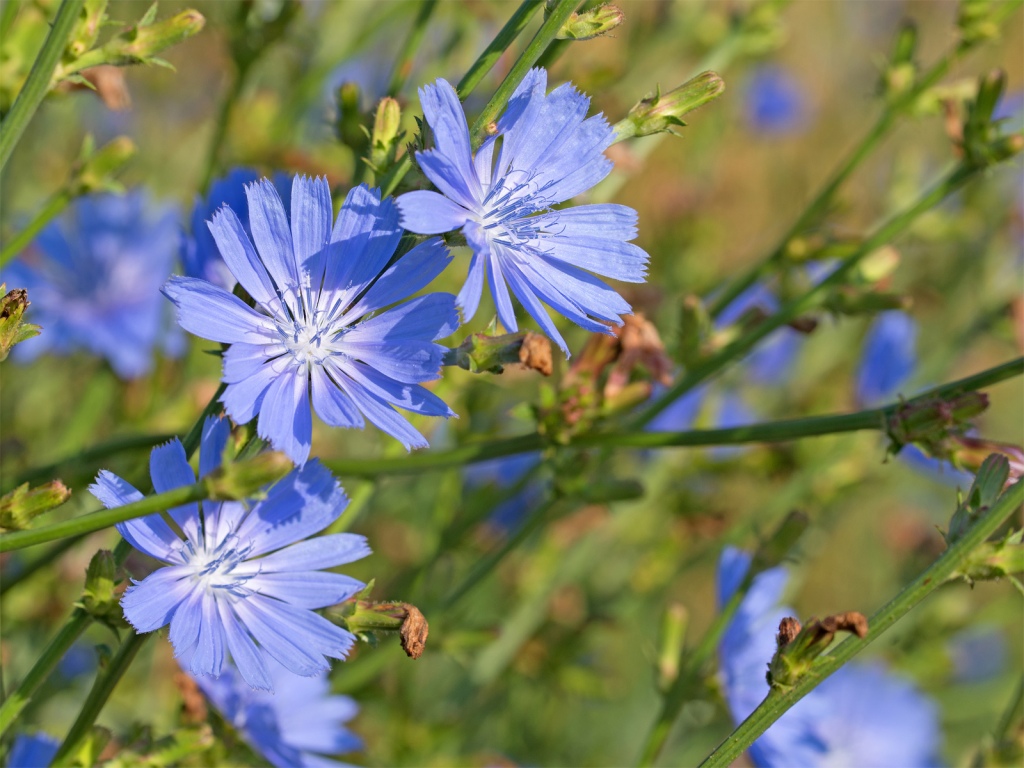A common plant found along Wisconsin roadsides and in fields is Chicory or Blue Daisy (Cichorium intybus.) A member of the aster family, it displays its sky-blue flowers from July into October. To see them, however, you must get out in the morning, because by noon on sunny days the 1 1/2-to-2-inch flowers have already gone to bed.
Chicory originated in the Mediterranean area of Europe and Northern Africa, where Egyptians called it chickoryeh. It was widely used in cooking, and most likely was the “bitter herb” used by the Hebrews to season the Passover lamb in Exodus 12:8. Early European settlers brought chicory across the Atlantic for their own use as well as a hay crop for cattle. Having adapted well to its new environment, it is now found growing wild throughout the United States.
The plant starts its annual growth journey with large basal leaves, similar to dandelion. At this time the bitterness of the leaves has not yet set in and they can be harvested and added to salads as a substitute for endive, another bitter herb to which it is closely related. Gardeners who favor the taste of chicory can extend the useful season by growing it in a dark cellar to blanch the leaves. In early summer, it extends to a 3-to-4-foot height with very stemmy growth containing only a few small leaves. It is on these stems that the flowers are borne.
The root of chicory is the part of the plant that has received the most use, though. It can be boiled and eaten like carrots or parsnips, or roasted and ground for brewing, either by itself or as a coffee additive. After digging and scrubbing the taproot, roast it slowly in an oven until it is hard and brittle, with a dark brown color on the root interior. Grind it and brew it like coffee, but use less than your usual amount, for it has a strong flavor. To this day, coffee in southern cities is commonly flavored with chicory, the practice dating back to Civil War days when it was found that chicory improves the taste of low-quality beans. ‘New Orleans Coffee’ typically refers to coffee enhanced with chicory. The practice is not restricted to New Orleans either. Recently my daughter’s best friend posted on Facebook that a new coffee house in New York City was serving iced chicory coffee. She stated that it had a licorice flavor to it.
As with many culinary herbs, the use of chicory has extended into the medicine cabinet. It has been used as a spring tonic, a liver remedy, as an aid in relieving joint stiffness, and as a cure for an upset stomach. A tea brewed from chicory leaves is thought to help remove unwanted phlegm from the stomach, which is surmised to interfere with absorption and secretion. In this manner, its intent is to purify the liver and spleen. Nursing mothers found the milky sap of chicory useful in easing the pain in the breasts from too much milk.
Whether you use chicory in your coffee or salad, or just admire the blue flowers along the roadside, perhaps you will now think of this common herb as more than just a weed.

